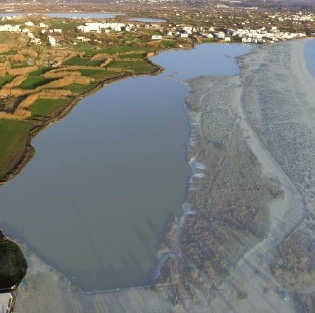Costal erosion: the future of sandy beaches

All claims expressed in this article are solely those of the authors and do not necessarily represent those of their affiliated organizations, or those of the publisher, the editors and the reviewers. Any product that may be evaluated in this article or claim that may be made by its manufacturer is not guaranteed or endorsed by the publisher.
The coastal zone is a constantly changing area and is one of the most vulnerable one because of climate crisis. In addition to the high concentration of population in coastal areas, there is also high activity in sectors such as tourism, trade and work. Increasing storms and Sea Level Rise (SLR) are likely to cause future flooding in coastal areas, bringing about significant changes in these ecosystems. The threats posed by coastal erosion are very significant, as more than 100 million people live within one meter of mean sea level, meaning that in the coming decades they will have to deal with issues of immigration, finance, social and environmental issues. This paper is an attempt to highlight the magnitude of the problem of coastal erosion, while at the same time a typical case of a coastal zone in the center of the Aegean (Greece) is examined through interpretation of collected data, mapping of the area and geospatial analysis. The results present both its future development based on different climate change scenarios, and based on different scenarios of anthropogenic activities and interventions. At the same time, methods of natural self-protection of the coastal zone against coastal erosion and sea level rise are discussed.
How to Cite

This work is licensed under a Creative Commons Attribution-NonCommercial 4.0 International License.
Copyright (c) 2023 The Author(s)
PAGEPress has chosen to apply the Creative Commons Attribution NonCommercial 4.0 International License (CC BY-NC 4.0) to all manuscripts to be published.

 https://doi.org/10.4081/peasa.12
https://doi.org/10.4081/peasa.12



